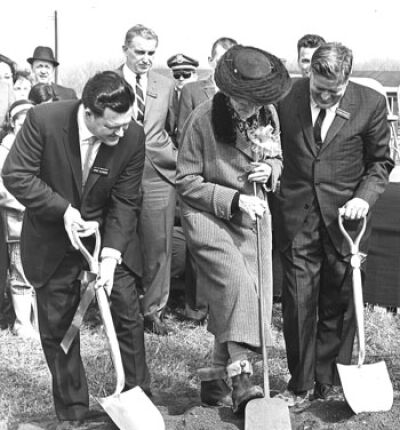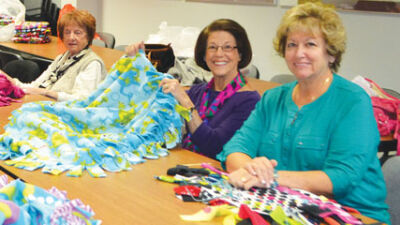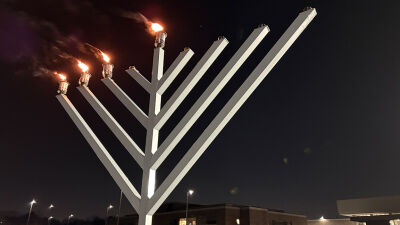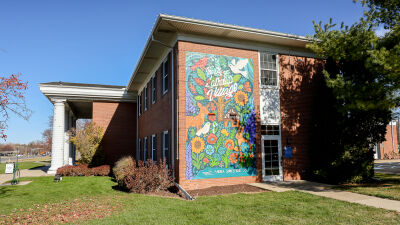SOUTHFIELD — It’s hard to imagine Southfield without its iconic cityscape adorned with skyscrapers that draw thousands in and out of the city daily.
However, what many who are beckoned to the “center of it all” might not realize on their daily commutes is that beneath the surface lies a rich history of Indigenous people, ties to the Underground Railroad, a hub for mid-century modern design and prominent figures such as the eccentric Mary Thompson, who sold a large plot of her family’s land to the city, which was used to build the Southfield Municipal Campus, and in her will left the remainder of her estate to the city of Southfield or the well-accessorized Jean McDonnell, Southfield’s first councilwoman, who always said, a woman wasn’t dressed properly unless she was wearing a hat.
Since 1965, the Southfield Historical Society has been devoted to “preserving the past in order to guard the future” through initiatives such as the 2021 State History Award winner from the Historical Society of Michigan: a permanent exhibit, the “Potawatomi of Southfield,” which is on display at the Town Hall Museum. The “Potawatomi of Southfield” pays tribute to the Native people who lived on reservations that would later become part of Southfield Township. The city of Southfield was also one of the first cities in Michigan to adopt the Indigenous Peoples Day Resolution in 2018 after the Southfield Historical Society petitioned the city to have Columbus Day changed to honor Indigenous People.
The Southfield Historical Society isn’t afraid of uncovering the truth and remains steadfast in its quest to preserve and acknowledge all sides of history, they said. Through their preservation projects, the Historical Society works to provide interpretive and educational programming for people of all ages to further their knowledge and understanding of Southfield’s history.
Darla Van Hoey, a former French teacher, has been the president of the Southfield Historical Society for over 10 years. Van Hoey and her late husband, Mike, had always been interested in history and had been involved with the Great Lakes Lighthouse Keepers Association for several years, so when a friend recommended that the two join the Historical Society, they took her up on the offer.
Van Hoey reflected on what her involvement in the Historical Society means to her.
“I know that when we were taught history, just as we were taught a world language, we didn’t teach it the way it needed to be taught, or the way it needed to be explained and learned. It needed to be done through reenactments, demonstrations and serious research. Just bringing this history to the people of Southfield has been really rewarding.”
Around 15 years ago, Laurie Penn, who was working as a reference librarian at the Southfield Public Library, met Rochelle Danquah, an educator and commissioner of the Michigan Freedom Trail. Around this time, Danquah made a groundbreaking discovery: Covenanter Church of Southfield was a station in the Underground Railroad. Through Danquah’s proof, Penn became enthralled with the local history and set up a program at the library for Danquah to present her findings regarding the Covenanter Church as part of the Underground Railroad to the city of Southfield at an open lecture with African American Civil War reenactors that depict the hardships of what it was like to be Black in the Civil War.
“The Historical Society’s been around for a long time, but it went into some kind of stasis for a number of years. So now it’s just totally out of control. It’s delightfully out of control,” Penn stated.
The Historical Society is headquartered in and operates the Mary Thompson Farmhouse, which depicts what typical farm life in Southfield would look like at the end of the 19th century. The Historical Society also operates the Town Hall Museum, which was originally built in 1872 but reopened in late 1976 as a museum. The Town Hall Museum is located in the Burgh Historic District, which is also home to original Southfield buildings such as the Methodist Church, built in 1856; the Simmons home, built in 1870; the Park home, built in 1881; a fire station built in 1942; the old Public Services Department building, built between 1947 and 1954; and the gazebo, built in 1988.
Tours of these historical sights are available by appointment. For tour, volunteer opportunities or membership inquiries, the Southfield Historical Society can be reached at darvanhoey@gmail.com.
 Publication select ▼
Publication select ▼






















